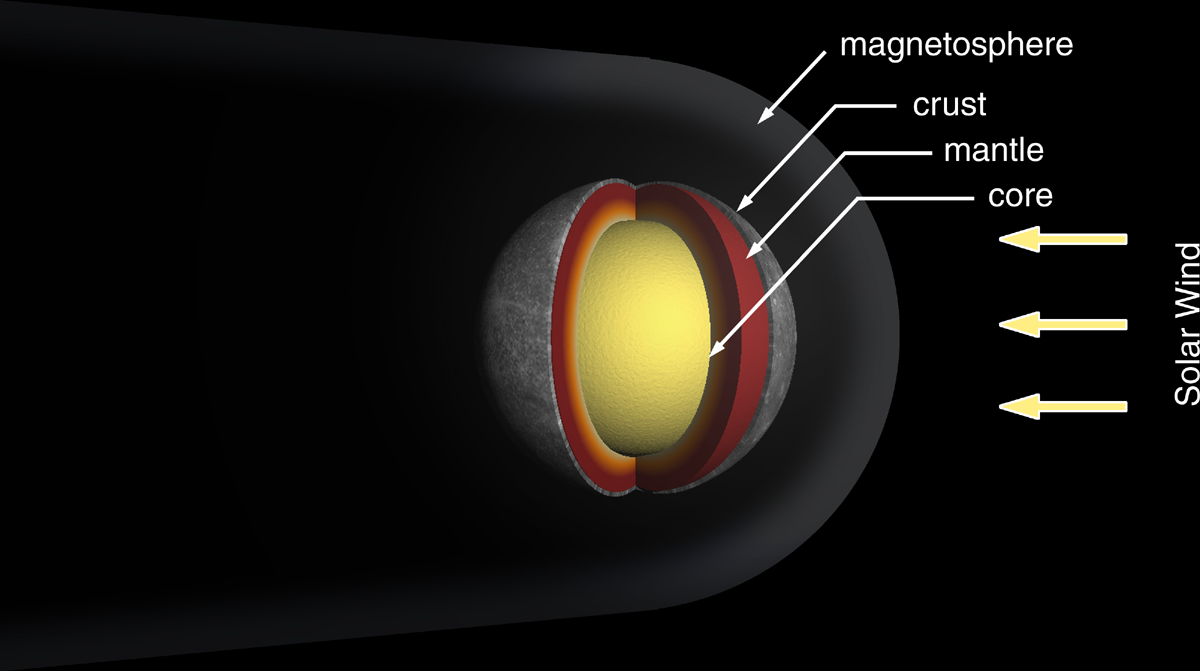

Mariner 10: The spacecraft executed 3 fly-bys of Mercury in 1974-75. The closest approach of the first encounter with Mercury was about 700 km (430 mi) on the night side. The spacecraft observed a well-developed bow shock and magnetosphere-like region similar to what we observe in the space environment around Earth. From this, it has been concluded that Mercury posesses an intrinsic magnetic field charaterized by a predominantly dipolar structure similar to the Earth's magnetic field but with a strength about 1% that of the Earth's. This field is too strong to be attributed to solar wind induction. This observation was unexpected as Mercury was thought to be unable to generate a magnetic field due to its small size and lack of recent geologic activity implying a cold interior. The observed magnetic field may mean that the core of Mercury is at least partially molten.
Figure: The internal structure of the planet. Beneath the crust of the planet is the rocky, solid mantle. At the center is an iron core that is beleived to be partially liquid, possibly generating the magnetic field. The magnetic field forms an invisible cavity within the solar wind in space called the magnetosphere. The boundary (magnetopause) occrs where the planet's magnetic field strength balances the strength of the magnetic field in the solar wond (IMF).
Solar Wind: A stream of energized, charged particles flowing outward from the sun in all directions consisting mostly of electrons and protons (plasma). The source of the solar wind is the solar corona, the outermost layer of the solar atmosphere where temperatures are so high (over one million degrees) that coronal gases escape the sun's gravity. Embeded in the outflowing solar wind is a magnetic field known as the interplanetary magnetic field (IMF).